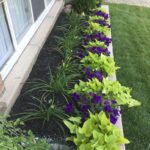Are you looking for landscape ideas for large areas? Landscaping a spacious outdoor area presents both challenges and opportunities. With the right planning and creativity, you can transform a large expanse of land into a stunning and functional landscape that meets your unique needs. In this article, we will explore various strategies and tips for designing and landscaping large outdoor spaces to create an inviting and visually appealing environment.
When it comes to landscaping a large area, there are numerous factors to consider, from the primary purpose of the space to the existing natural features. Whether you’re aiming to create a serene retreat for relaxation, an entertaining haven for social gatherings, or a practical outdoor area for activities, careful planning is essential. This introduction will set the stage for discussing key considerations in creating landscape designs tailored to large areas.
One of the fundamental aspects of landscaping large areas is choosing the right elements to enhance the visual appeal and functionality of the space. From selecting trees and plants to incorporating hardscaping elements and focal points, there are various techniques to consider when designing expansive landscapes. By exploring these ideas in detail, you can gain valuable insights into transforming vast outdoor spaces into captivating landscapes that fulfill your vision and requirements.
Consider the Purpose
When contemplating landscape ideas for large areas, it’s essential to consider the purpose of the space. Whether it’s meant for relaxation, entertainment, or practical use, the primary function of the area will greatly influence its design and layout. For relaxation, a serene and tranquil atmosphere may be desired, while an area for entertainment might call for features like outdoor seating and social spaces.
On the other hand, a practical space may need to incorporate elements like garden beds or storage areas. Understanding the purpose of the area is crucial in creating a landscape that meets specific needs and enhances overall usability.
Incorporating various elements into the landscape design that align with its intended use is important for maximizing functionality and aesthetic appeal. For instance, if the large area is meant for relaxation, incorporating natural elements like trees and open spaces can help create a calming environment.
On the other hand, if it’s meant for entertainment purposes, focal points such as water features or fire pits can add visual interest and create a welcoming ambiance. By considering the purpose of the large area from the outset of planning, it becomes easier to implement tailored landscaping solutions that effectively meet unique needs.
Understanding how landscaping large areas can serve different purposes offers an opportunity to integrate creativity into the design process. From exploring innovative hardscaping materials to selecting low-maintenance plants that complement the space’s function, there are endless possibilities for creating a stunning landscape that harmonizes with its intended use.
| Purpose | Design Elements |
|---|---|
| Relaxation | Natural elements like trees and open spaces |
| Entertainment | Focal points such as water features or fire pits |
| Practical Use | Functional elements like garden beds or storage areas |
Think Big With Trees
Large areas offer unique opportunities for creative landscaping, and one of the most impactful elements to consider is the use of trees. When designing a landscape for a big space, the right selection of trees can provide shade, privacy, and aesthetic appeal that enhances the overall atmosphere. Here are some tree options to consider for landscaping large areas:
- Oak Trees: Known for their grandeur and longevity, oak trees can add a sense of majesty and strength to a large landscape. Their wide spreading branches offer ample shade and create a stately presence.
- Maple Trees: With their vibrant foliage in the fall and beautiful shade in the summer, maple trees are an excellent choice for adding visual interest to a large area. They can also serve as natural focal points with their stunning colors.
- Pine Trees: Ideal for creating a sense of privacy and seclusion in a vast space, pine trees are perfect for defining boundaries or creating cozy nooks within the landscape.
In addition to their aesthetic benefits, these types of trees contribute to environmental sustainability by providing oxygen, supporting local wildlife, and helping manage soil erosion. When planning landscape ideas for large areas, incorporating these trees strategically can significantly enhance the beauty and functionality of the space.
For those looking to create an expansive natural environment within their property, the thoughtful selection and placement of trees will be crucial in achieving the desired atmosphere. By understanding how different types of trees can impact the landscape’s aesthetics and practical use, property owners can make informed decisions that align with their vision for outdoor spaces. Overall, thinking big with trees is an essential aspect of landscaping large areas that shouldn’t be overlooked.
Embrace Open Spaces
Large areas provide the perfect opportunity to embrace open spaces and create a sense of freedom and connection to nature. When considering landscape ideas for large areas, it’s important to think about how to make the most of the expansive space while also maintaining a natural and inviting atmosphere. One effective way to achieve this is by creating open grassy areas that can be used for recreational activities such as picnics, sports, or simply enjoying the outdoors.
In addition to open grassy areas, another option for embracing open spaces in large landscapes is to create meadows filled with wildflowers. This not only adds visual interest and natural beauty to the area but also provides an important habitat for local wildlife. The use of native wildflowers can also help support the local ecosystem while reducing maintenance needs.
When designing open spaces in large landscapes, it’s essential to consider how these areas will be used and enjoyed by people. Providing ample seating options, shaded areas, and easy access points can make these open spaces more inviting and functional for a variety of activities.
| Open Spaces Ideas | Benefits |
|---|---|
| Create meadows with wildflowers | Adds visual interest and natural beauty; supports local wildlife and reduces maintenance needs |
| Create open grassy areas for recreational activities | Provide space for picnics, sports, or outdoor relaxation; requires careful planning for functionality and accessibility |
| Add ample seating options and shaded areas | Makes open spaces more inviting and comfortable for people enjoying the outdoors |
Create Focal Points
Creating focal points in a large landscape is essential to break up the space and add visual interest. Focal points draw the eye and provide a sense of balance and harmony to the overall design. When considering landscape ideas for large areas, it’s important to strategically place focal points to create an inviting and aesthetically pleasing environment.
Importance of Focal Points
Focal points can range from sculptures and water features to architectural elements or even unique plantings. These elements serve as anchors, drawing attention and creating a sense of purpose within the landscape. They can also help guide people through the space, providing directional cues and encouraging exploration. When designing focal points, it’s essential to consider how they will interact with the surrounding elements and contribute to the overall atmosphere of the landscape.
Types of Focal Points
When planning focal points for large landscapes, consider incorporating a variety of types to cater to different preferences and needs. Water features like fountains or ponds can add a calming element, while sculptures or other artistic installations can provide a dramatic visual impact. Architectural elements such as pergolas, gazebos, or trellises can offer functional as well as decorative focal points that enhance the usability of the space.
Placement and Scale
Careful consideration should be given to where focal points are placed within the landscape. They should be strategically positioned to draw attention while complementing the flow and function of the space. Additionally, scale plays a crucial role in creating impactful focal points for large areas. Larger spaces may require larger-scale features to maintain visual appeal and prevent them from getting lost in the vastness of the surroundings.
By incorporating well-planned focal points into your landscape design for large areas, you can elevate the overall aesthetic appeal while creating inviting spaces that cater to various functions and preferences. Each focal point should contribute meaningfully to the experience of being in the space while enhancing its natural beauty and functionality.
Utilize Hardscaping
When it comes to landscaping large areas, hardscaping can play a crucial role in adding structure and organization to the overall design. From pathways and patios to retaining walls and decorative elements, hardscaping can help create a cohesive and functional outdoor space. Here are some key sub-sections to consider when utilizing hardscaping in landscape ideas for large areas.
Pathways and Patios
One of the primary functions of hardscaping in large landscapes is creating pathways and patios that connect different areas of the outdoor space. Whether it’s using pavers, natural stone, or concrete, the choice of materials can make a significant impact on the visual appeal of the pathways and patios. Additionally, incorporating elements such as outdoor seating areas, fire pits, or built-in grilling stations can enhance the functionality of these spaces for entertainment and relaxation.
Retaining Walls and Terracing
In instances where large areas have varying elevations or sloping terrain, constructing retaining walls or terracing can be essential for controlling erosion and creating usable spaces. Retaining walls not only serve a practical purpose but also add visual interest to the landscape design. By using materials that complement the overall aesthetic of the other hardscaping elements, retaining walls can become an integral part of the landscape’s style.
Innovative Design Ideas
To elevate the design of hardscaping in large areas, consider innovative ideas such as incorporating water features into pathways, using lighting to highlight key elements at night, or integrating sustainable materials into the hardscape design. These creative touches can add a unique flair to the landscape while also improving its functionality and visual appeal.
By carefully considering all aspects of hardscaping in landscape ideas for large areas, you can create an outdoor space that not only looks stunning but is also designed for practical use and long-term enjoyment.
Incorporate Low-Maintenance Plants
Incorporating low-maintenance plants in large landscapes can not only reduce the amount of upkeep required but also add beauty and diversity to the overall design. When considering landscape ideas for large areas, it’s important to explore options for drought-resistant plants and native species that can thrive with minimal care. These types of plants are especially suitable for large areas where regular maintenance may be challenging.
There are many low-maintenance plant options that can be incorporated into a large landscape design, such as ornamental grasses, succulents, and native wildflowers. These plants are well-adapted to local environmental conditions and often require less water and attention compared to other species. Native plants, in particular, can contribute to a more sustainable ecosystem by attracting local wildlife and pollinators.
When choosing low-maintenance plants for a large area, it’s important to consider their suitability for the specific climate, soil type, and light conditions. Additionally, selecting a variety of low-maintenance plants with different blooming seasons can ensure year-round visual interest in the landscape. By incorporating these plant options strategically throughout the design, it’s possible to create a dynamic and visually appealing landscape with minimal maintenance requirements.
Consider the following list of low-maintenance plants suitable for large landscapes:
- Ornamental grasses (e.g. feather reed grass, switchgrass)
- Native wildflowers (e.g. black-eyed Susan, purple coneflower)
- Succulents (e.g. sedum, yucca)
- Drought-resistant shrubs (e.g. lavender, juniper)
- Ground cover plants (e.g. creeping thyme, moss phlox)
By incorporating a diverse selection of low-maintenance plants into the landscape design, it’s possible to create an attractive and sustainable environment that complements the overall vision for the large area.
Enhance the Natural Features
When working with a large landscape, it’s important to take advantage of the existing natural features and incorporate them into the overall design. Whether it’s rolling hills, lush valleys, or a serene body of water, these natural elements can add depth and character to the landscape. By enhancing and highlighting these features, you can create a stunning and harmonious outdoor space.
One way to enhance natural features is by using strategic planting. For example, if your property includes sloping hills, consider planting cascading plants or creating terraced gardens to accentuate the beauty of the terrain. Similarly, if there are bodies of water on your property, incorporating water-loving plants and creating a tranquil pathway around the water’s edge can amplify its presence in the landscape.
In addition to planting, hardscaping elements such as stone pathways or retaining walls can be used to showcase and define natural features. By carefully integrating these structures into the existing landscape, you can draw attention to specific areas while also providing practical solutions for navigating the space.
Overall, enhancing natural features in a large area requires careful planning and attention to detail. It’s essential to work with the land rather than against it in order to create a cohesive and visually appealing outdoor environment that complements the surrounding natural beauty. By embracing and enhancing these features, you can elevate your landscape design and create a truly unique and inviting space for relaxation and enjoyment.
Conclusion
In conclusion, creating a stunning landscape for large areas requires careful planning, creativity, and attention to detail. By considering the purpose of the space and thinking big with trees, embracing open spaces, creating focal points, utilizing hardscaping, incorporating low-maintenance plants, and enhancing natural features, it is possible to transform a large area into a breathtaking outdoor oasis.
When designing a landscape for a large area, it’s important to remember that every space is unique. What works for one area may not work for another. It’s crucial to consider individual needs and style preferences when planning the landscape design. Additionally, taking into account the existing natural features of the landscape can help enhance its beauty and create a harmonious outdoor environment.
Ultimately, whether the goal is to create a space for relaxation, entertainment, or practical use, there are countless landscape ideas for large areas that can be tailored to meet specific needs. With careful consideration and thoughtful planning, anyone can create a beautiful and functional outdoor space that they can enjoy for years to come.

Welcome to my gardening blog! I am passionate about plants and enjoy sharing my knowledge and experiences with others. In this blog, I will write about everything related to gardening, from tips on how to get started to updates on my own garden projects.





